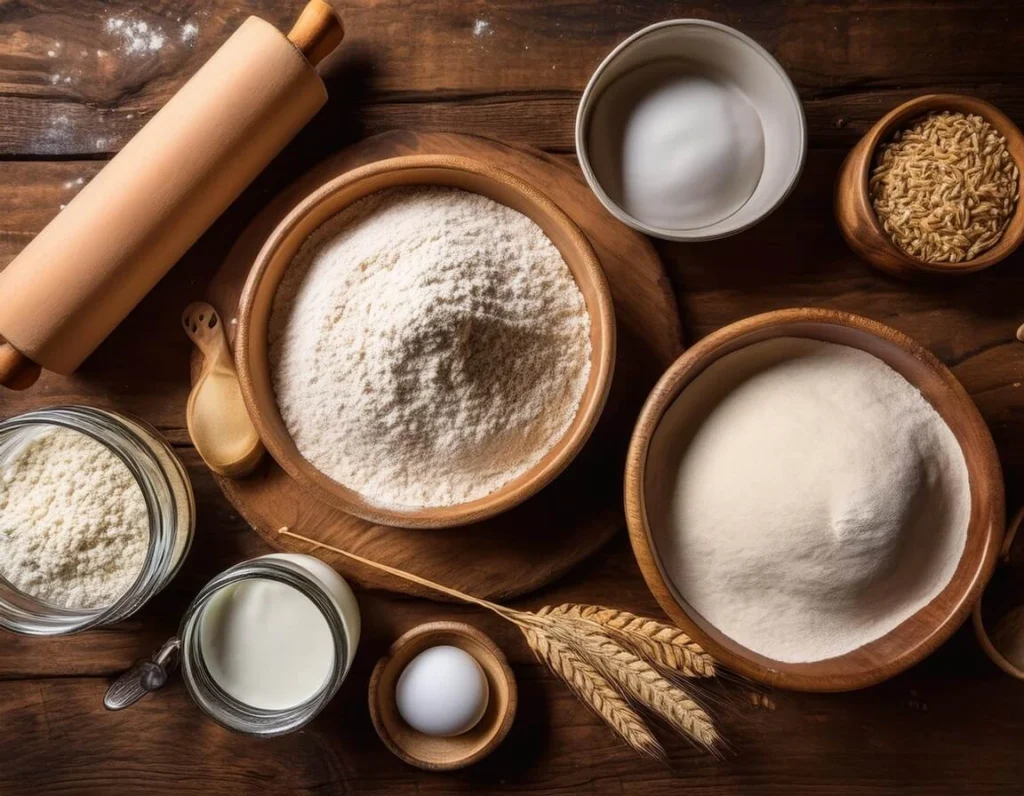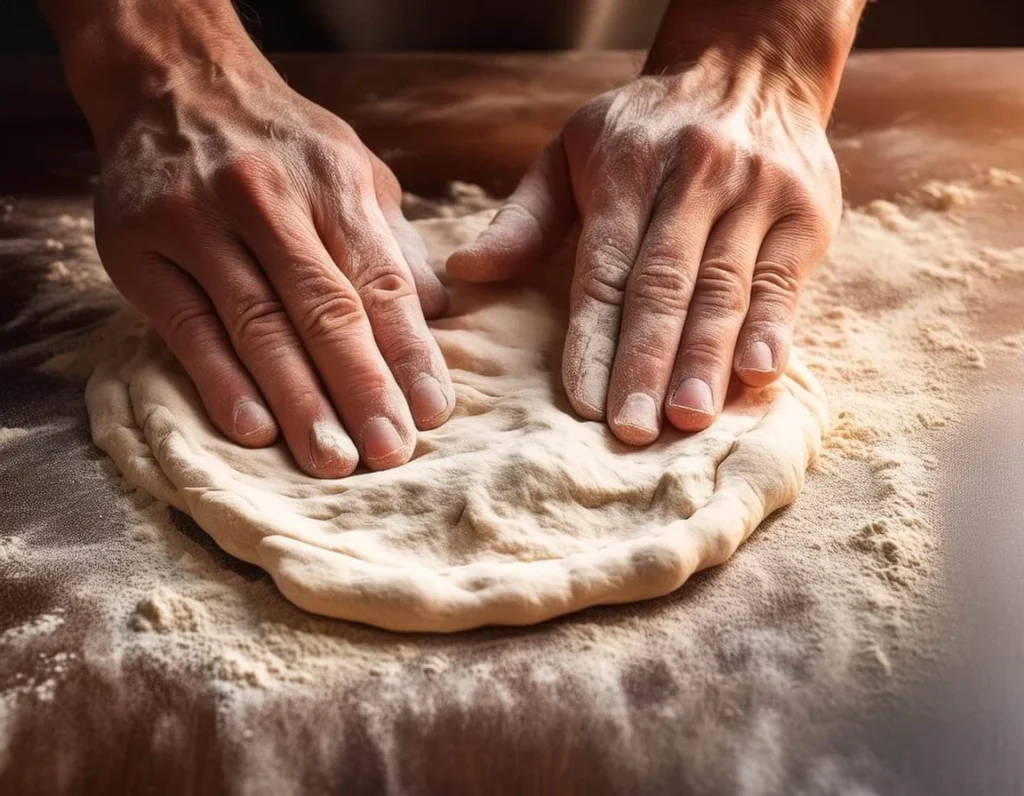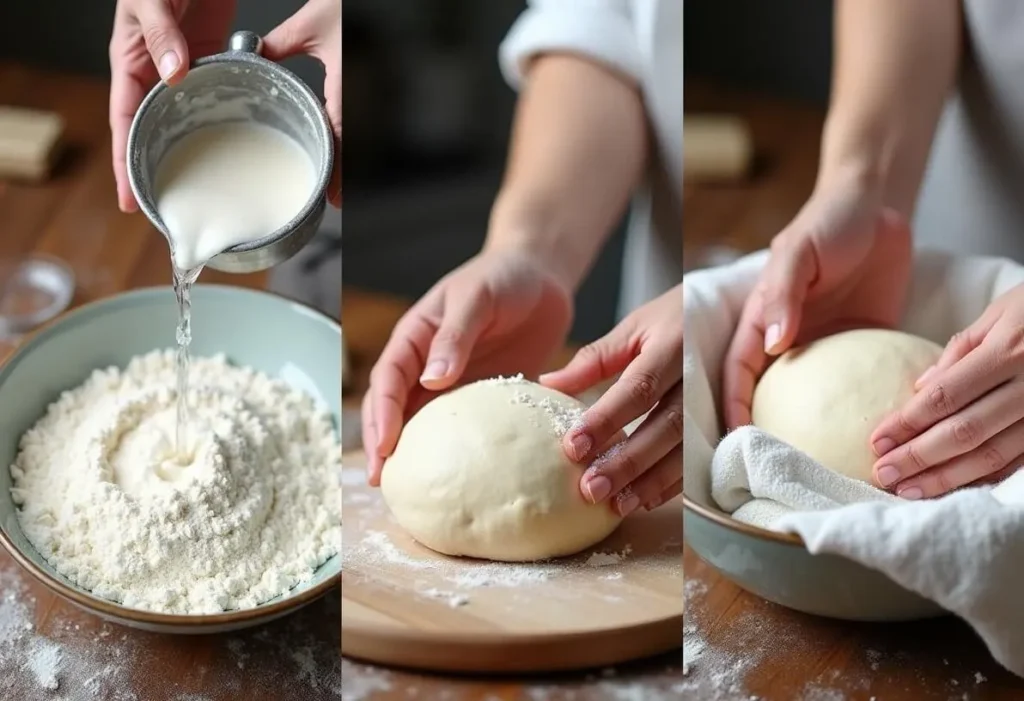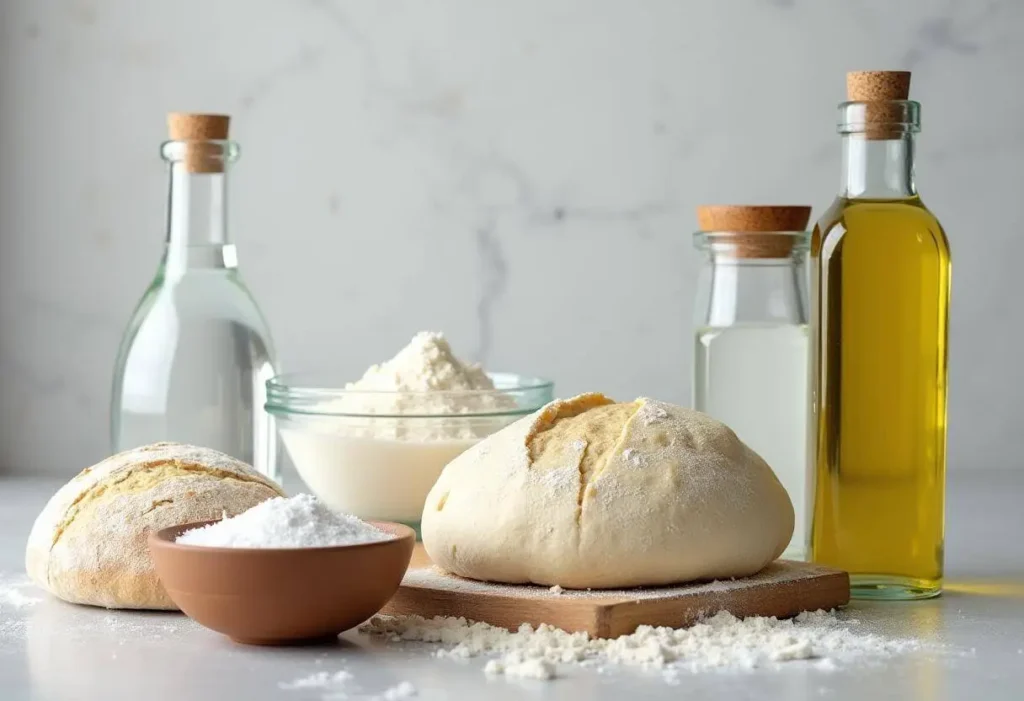Introduction
Pizza lovers know that a great crust is the foundation of any memorable pizza. From the airy chewiness of Neapolitan-style pies to the crispy edges of a classic thin crust, the type of flour you use plays a pivotal role in achieving the perfect dough. One question frequently asked by home bakers is: Is bread better than AP flour for pizza dough?
Flour is the heart of pizza dough, and its composition determines key characteristics like texture, elasticity, and flavor. Bread flour and all-purpose flour are two popular options, but they have significant differences that can influence the final result. Whether you’re aiming for a soft and tender crust or a chewy and robust one, choosing the right flour is essential for success.

This article dives deep into the comparison between bread flour and all-purpose flour, examining their protein content, gluten development, and suitability for various pizza styles. By the end, you’ll understand which flour is better for your pizza dough needs and how to adapt recipes for your chosen flour type.
Understanding Pizza Dough Basics
What Makes Pizza Dough Unique?
Pizza dough is a delicate balance of simple ingredients: flour, water, yeast, and salt. Each component plays a specific role in creating the ideal crust. Flour provides structure and strength, water hydrates the dough and activates the yeast, salt enhances flavor, and yeast is responsible for fermentation and rising.

Among these ingredients, flour is the foundation, as it determines the dough’s elasticity and texture. This is largely due to gluten, a network of proteins that forms when flour is mixed with water and kneaded. Gluten development gives pizza dough its stretchiness, allowing it to hold its shape while also creating the chewy bite characteristic of a good crust.
The amount of gluten formed depends on the type of flour used. For example, bread flour has a higher protein content than all-purpose flour, which results in more gluten and a firmer, chewier dough.
Importance of Flour in Pizza Dough
Flour selection is crucial in defining the texture and crispness of your pizza crust. A high-protein flour like bread flour creates a chewy and robust crust, making it ideal for thicker styles like New York or Neapolitan pizzas. On the other hand, all-purpose flour, with its lower protein content, yields a softer, more tender crust, suitable for thin or pan-style pizzas.
Both bread flour and all-purpose flour have their advantages, but understanding their properties helps you choose the right one for your desired outcome. Whether you prioritize chewiness or tenderness, flour is the key to crafting a pizza crust that matches your vision.
To understand more about how gluten impacts dough elasticity, check out this detailed guide from Science Buddies.
Bread Flour vs. All-Purpose Flour: Key Differences
Protein Content and Gluten Development
The primary difference between bread flour and all-purpose flour lies in their protein content. Bread flour typically contains 12-14% protein, whereas all-purpose flour has a lower protein range of 9-11%. This difference might seem small, but it plays a significant role in pizza dough.
Higher protein content means more gluten development when the flour is mixed with water and kneaded. Gluten forms a stretchy, elastic network that gives pizza dough its structure and ability to rise. Bread flour, with its higher protein, produces a stronger gluten network, making the dough more elastic and resilient. This is why bread flour is often preferred for chewier, sturdier crusts.
In contrast, the lower protein in all-purpose flour creates a softer dough with a less developed gluten structure. This results in a more tender crust, ideal for styles where chewiness isn’t the primary goal.
Learn more about the relationship between protein content in different types of flour and its impact on gluten development in this article by the Canadian food focus.
Texture and Flavor Impact
Bread flour is the go-to choice for pizza crusts that are chewy and robust, offering a hearty bite that holds up well to heavy toppings. The gluten structure formed with bread flour allows the dough to stretch thin without tearing, perfect for New York-style or Neapolitan pizzas.

All-purpose flour, however, is better suited for soft and tender crusts. It produces a more delicate texture and a lighter bite, making it a favorite for thin crust or pan pizzas. Additionally, its milder flavor complements buttery or rich toppings, providing a subtle base that doesn’t overpower.
Pizza Styles and Flour Suitability
Certain pizza styles align better with specific flour types:
- Bread Flour: Best for Neapolitan, New York-style, and Sicilian pizzas due to its ability to create chewy, elastic crusts that hold their shape under toppings.
- All-Purpose Flour: Ideal for thin crust, deep-dish, and dessert pizzas, offering a softer and more pliable base that suits a range of baking methods.
Understanding these differences allows you to match your flour choice to your preferred pizza style, ensuring a crust that complements your culinary vision.
Choosing the Best Flour for Your Pizza Dough
Is AP or Bread Flour Better for Pizza Dough?
The choice between bread flour and all-purpose flour for pizza dough depends on your goals, experience, and personal preferences. Bread flour, with its higher protein content, is ideal for those who prefer a chewy, structured crust that can hold up to heavier toppings. It’s especially useful for pizza styles like Neapolitan or New York, where elasticity and strength are crucial.
All-purpose flour, on the other hand, is easier to work with for beginners. It produces a softer, more tender crust, making it perfect for thin crusts or pan pizzas. Additionally, all-purpose flour is more widely available and often less expensive than bread flour, making it a practical option for casual pizza-making.
What’s the Best Flour to Use for Pizza Dough?
While bread flour and all-purpose flour are the most common choices, other flours can also be used depending on the style of pizza you’re making:
- 00 Flour: The gold standard for authentic Neapolitan pizza, 00 flour is finely milled with moderate protein content (11-12%). It creates a soft, chewy crust with a crisp exterior when baked at high temperatures.
- Whole Wheat Flour: For a nutty, hearty flavor, whole wheat flour is an excellent choice. However, it has a denser texture and requires a mix with white flour for better elasticity.
- Gluten-Free Flour: For those with dietary restrictions, gluten-free flour blends provide a decent alternative, although the texture and elasticity differ significantly from traditional pizza dough.
The best flour for your pizza dough depends on the flavor, texture, and style you wish to achieve. Experimentation is key to finding what works best for your tastes.
What Happens If I Use Bread Flour Instead of AP?
Substituting bread flour for all-purpose flour in a pizza dough recipe designed for AP flour will result in noticeable changes. The higher protein content in bread flour will create a stronger gluten network, yielding a chewier and more elastic crust. This substitution works well for pizzas where a firm, hearty bite is desired.
However, using bread flour may require slight adjustments to hydration levels. Bread flour absorbs more water than AP flour, so increasing the water content slightly (by about 1-2 tablespoons) can help maintain a balanced dough consistency.
Ultimately, both bread flour and all-purpose flour can produce excellent results, but understanding their differences allows you to tailor your pizza to perfection.
Secrets to Good Pizza Dough
Key Techniques for Making Perfect Dough
Achieving the perfect pizza dough requires a combination of the right ingredients and proper techniques. Here are some essential tips:
- Hydration Ratios: The amount of water in your dough affects its texture and elasticity. For bread flour, aim for a hydration level of 60-65%, as its higher protein content absorbs more water. All-purpose flour works well with a slightly lower hydration of 55-60%.
- Kneading: Kneading develops the gluten network, giving the dough its structure and elasticity. For optimal results, knead the dough for about 8-10 minutes by hand or 5-7 minutes with a mixer until it’s smooth and slightly tacky.
- Proofing: Allowing the dough to proof at room temperature for 1-2 hours or cold-proofing it in the refrigerator for up to 24 hours enhances flavor and texture. Cold-proofing is particularly beneficial for bread flour dough, as it improves gluten relaxation and elasticity.
- Stretching: Handle the dough gently when shaping it into a pizza base. Avoid using a rolling pin, which can compress the air bubbles responsible for a light, airy crust.

Common Mistakes to Avoid
Even experienced bakers can run into issues with pizza dough. Avoid these common pitfalls:
- Overproofing: Letting the dough proof too long can weaken the gluten structure, leading to a deflated and overly soft crust.
- Under-kneading: Insufficient kneading results in a weak gluten network, making the dough tear easily during stretching.
- Not Adjusting for Flour Differences: Using the same recipe for both bread and all-purpose flour without adjusting hydration can lead to overly dry or sticky dough.
Can I Use Bread Flour for Pizza Dough?
Absolutely! Bread flour is an excellent choice for pizza dough, especially if you want a chewy and sturdy crust. Its higher protein content provides strength and elasticity, making it ideal for styles like Neapolitan or New York pizza.
When using bread flour, ensure you slightly increase the water content in your recipe to account for its higher absorption rate. Additionally, give the dough ample time to rest during proofing, as this relaxes the gluten and makes the dough easier to shape.
By mastering these techniques and avoiding common mistakes, you’ll create pizza dough that’s consistently delicious, regardless of your choice of flour.
Bread Flour vs. All-Purpose Flour: A Practical Comparison
Side-by-Side Recipe Test
To understand how bread flour and all-purpose flour differ in pizza dough, try these simple recipes:
Bread Flour Pizza Dough:
- 3 ½ cups bread flour
- 1 ¼ cups warm water (adjust as needed)
- 2 tsp salt
- 1 tsp sugar
- 1 tsp active dry yeast
- 2 tbsp olive oil
All-Purpose Flour Pizza Dough:
- 3 ½ cups all-purpose flour
- 1 cup warm water (adjust as needed)
- 1 ½ tsp salt
- 1 tsp sugar
- 1 tsp active dry yeast
- 2 tbsp olive oil
Instructions for both: Combine the ingredients and knead until smooth. Proof the dough for 1-2 hours at room temperature or overnight in the fridge. Shape, top, and bake at 475°F for 10-12 minutes.

Notice the differences:
- The bread flour dough will feel firmer and more elastic during kneading and produce a chewier crust.
- The all-purpose dough will be softer and result in a more tender, less structured crust.
How to Adjust Recipes for Different Flours
Switching between bread flour and all-purpose flour requires minor adjustments:
- Hydration: Bread flour absorbs more water, so increase the water by about 1-2 tablespoons when substituting it for all-purpose flour. Conversely, reduce the water slightly when using all-purpose flour instead of bread flour.
- Kneading: Bread flour dough may require longer kneading (8-10 minutes) to develop its strong gluten network. All-purpose flour, with its lower protein, needs gentler kneading (5-7 minutes).
By experimenting with these recipes and adjustments, you can find the perfect balance for your preferred pizza style. Each flour offers unique benefits, so try both to discover what works best for you.
FAQ Section
Is AP or bread flour better for pizza dough?
Both all-purpose (AP) and bread flour are excellent choices for pizza dough, but the better option depends on your goals. Bread flour, with its higher protein content, creates a chewier and more elastic crust, ideal for styles like Neapolitan and New York. All-purpose flour produces a softer, more tender crust, perfect for thin or pan-style pizzas. Choose bread flour for strength and chewiness or AP flour for versatility and ease of use.
What’s the best flour to use for pizza dough?
The best flour depends on your personal preferences and desired outcomes. For authentic Neapolitan pizzas, opt for 00 flour. Bread flour works best for chewy, structured crusts, while all-purpose flour is great for softer, more tender results. Whole wheat flour can add nutty flavor and density, while gluten-free blends cater to dietary restrictions. Experimenting with different flours is key to discovering your perfect dough.
What is the secret to good pizza dough?
The secret lies in mastering hydration, kneading, and proofing. Match hydration levels to your chosen flour, knead to develop a smooth gluten network, and allow sufficient time for proofing to enhance flavor and texture. Handle the dough gently when shaping to maintain its structure and airiness.
What happens if I use bread flour instead of AP?
Using bread flour instead of all-purpose flour will result in a chewier and firmer crust due to its higher protein content. However, you may need to slightly increase the water in the recipe to accommodate bread flour’s higher absorption rate. This substitution works especially well for pizzas requiring a strong and elastic dough.
Can I use bread flour for pizza dough?
Yes, bread flour is a fantastic choice for pizza dough. Its higher protein content helps create a sturdy and chewy crust, making it ideal for styles like New York or Sicilian. Just be sure to adjust hydration and kneading times for optimal results.
Conclusion
When deciding Is bread better than AP flour for pizza dough? the answer lies in your preferences and the pizza style you want to achieve. Bread flour offers a higher protein content, resulting in a chewier, more elastic crust ideal for styles like Neapolitan or New York. Its strong gluten network allows the dough to hold its shape and handle heavy toppings with ease. However, bread flour may require slight adjustments in hydration and kneading.
All-purpose flour, on the other hand, is a versatile and accessible option that produces a softer, more tender crust. It’s perfect for thinner, delicate pizzas or pan-style crusts where a less chewy texture is desired. Its lower protein content also makes it easier to work with for beginners.
Ultimately, both flours have their unique benefits, and neither is definitively better. The best choice depends on your taste, texture preferences, and the type of pizza you wish to create.
Experimenting with both bread and all-purpose flour is the best way to discover what works for you. By understanding their differences and making minor adjustments, you can craft a pizza dough that perfectly matches your vision of the ideal crust.

